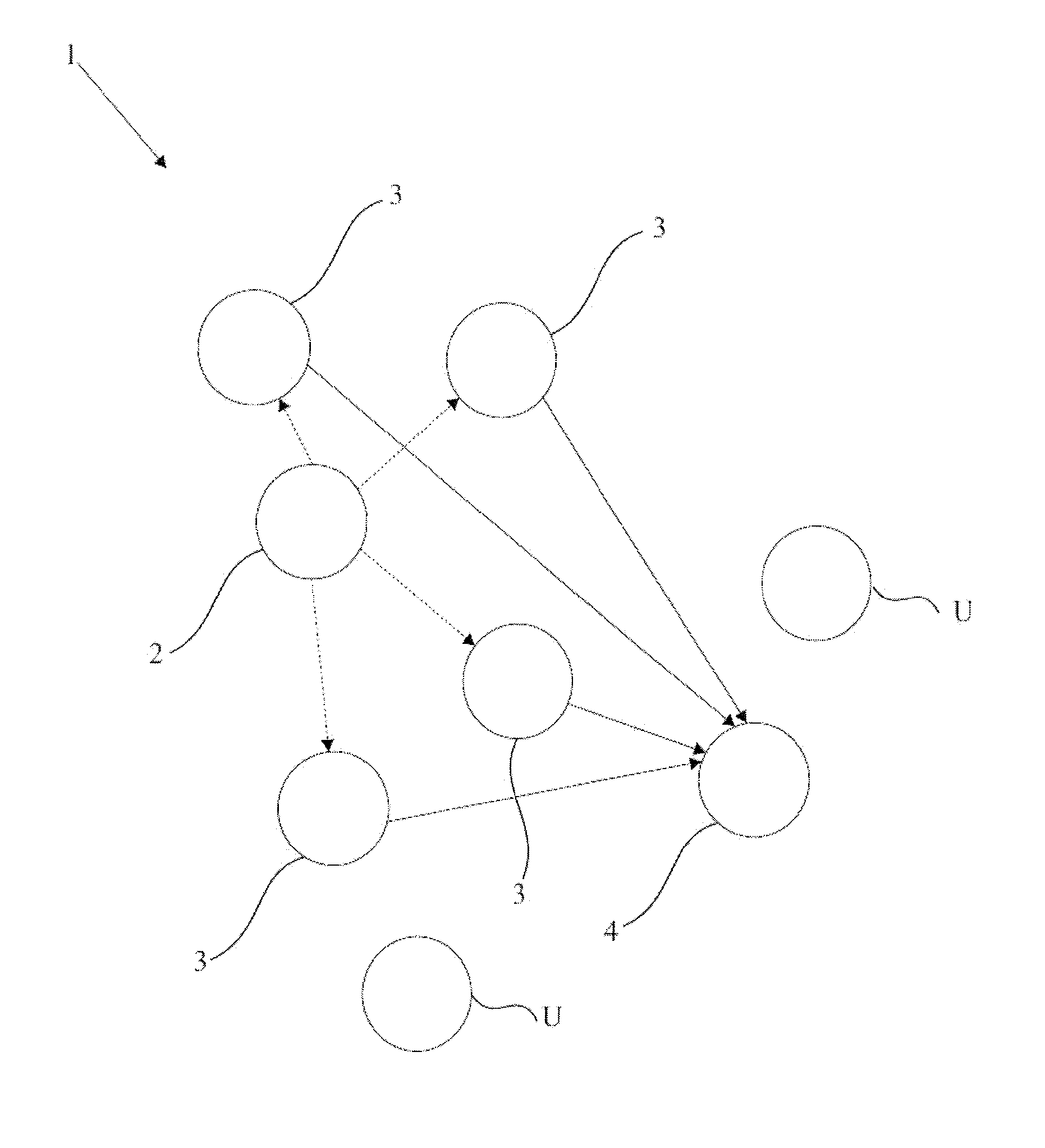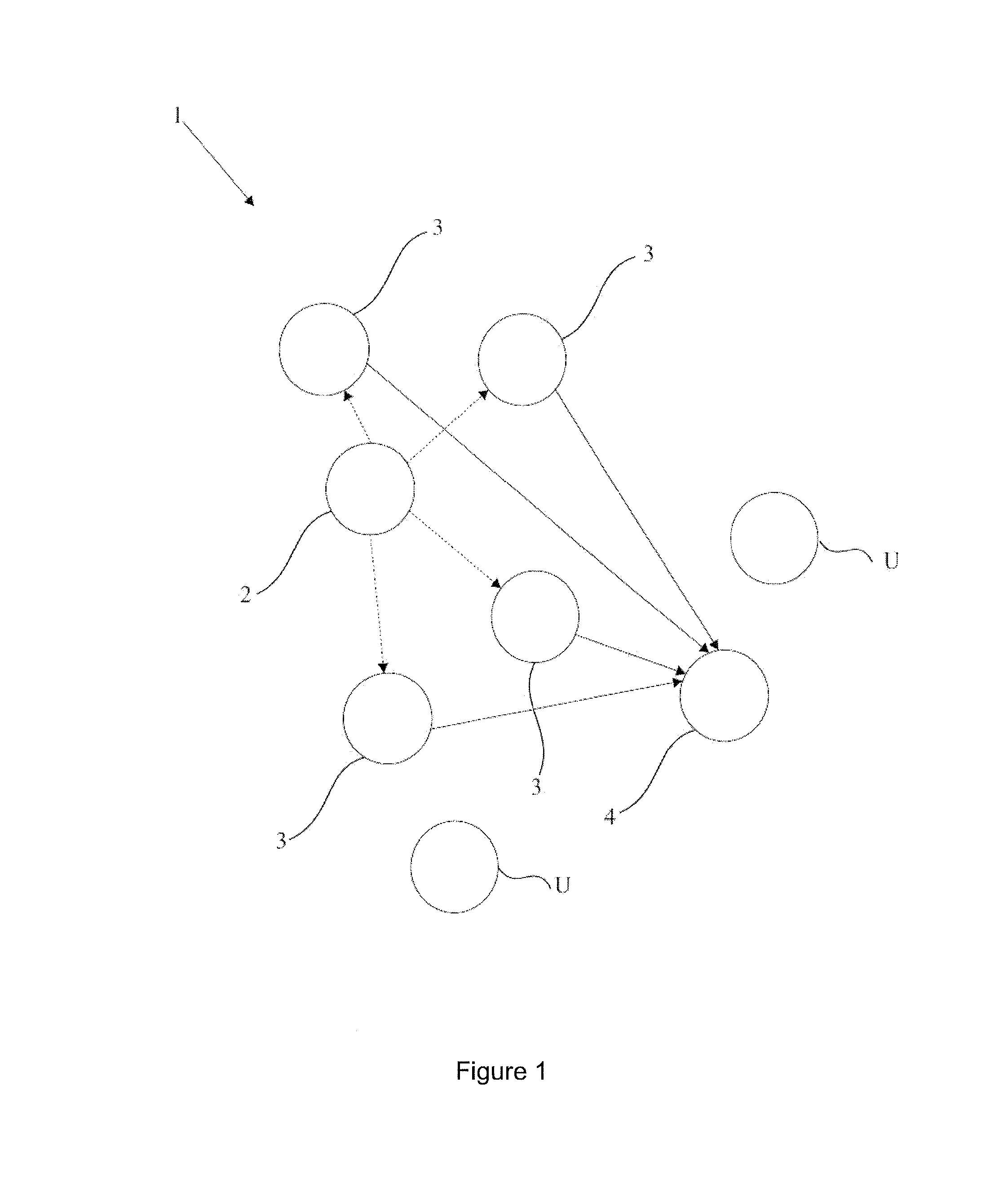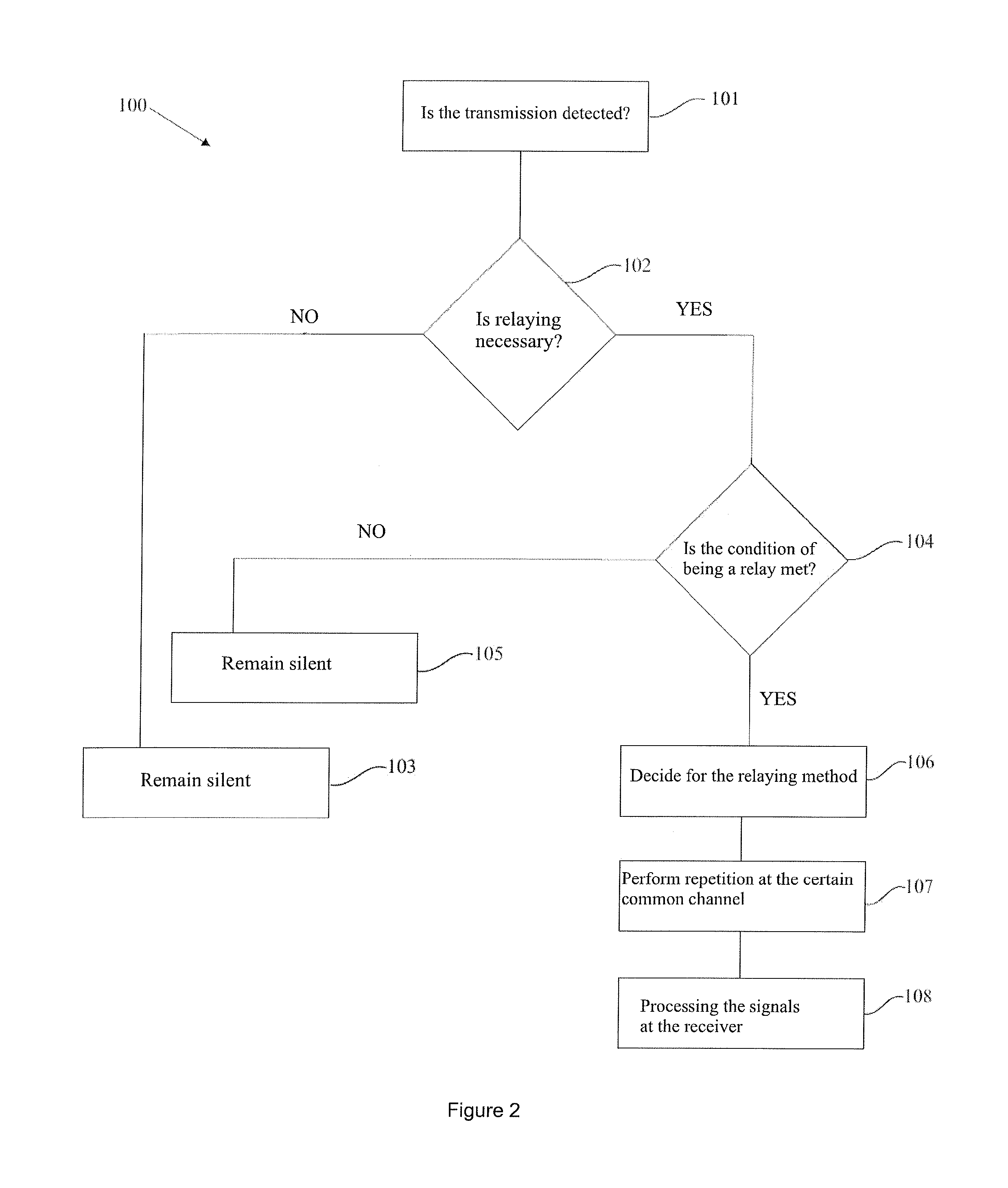System and method of cooperative and opportunistic relaying of transmissions requiring relay coordination
a relaying system and relay technology, applied in repeater circuits, line-transmissions, electrical devices, etc., can solve the problems of inability to reach the diversity gain present in the network using a fixed relay, additional traffic load and additional delay, and achieve the reduction of the total amount of band used, delay and maximum diversity gain
- Summary
- Abstract
- Description
- Claims
- Application Information
AI Technical Summary
Benefits of technology
Problems solved by technology
Method used
Image
Examples
Embodiment Construction
[0018]The system and method developed to fulfill the objectives of the present invention is illustrated in the accompanying figures, in which:
[0019]FIG. 1 is a block diagram of the system.
[0020]FIG. 2 is the flow chart of the relay.
[0021]FIG. 3 is a schematic block diagram of the flow between the relay and destination.
[0022]The components shown in the figures are each given reference numerals as follows:[0023]1. System[0024]2. Source[0025]3. Relay[0026]4. Destination[0027]U. Unit which cannot receive transmission from the source[0028]100. Decision method used in the relay[0029]GVA: Generalized Viterbi Algorithm[0030]CE: Channel Estimation[0031]SCE: Sequence and Channel Estimation
[0032]The system (1), which enables the transmission to be relayed in a common channel and time interval, and the incoming signals to be processed, comprises[0033]a source (2) which transmits,[0034]at least one relay (3) which transmits the transmission that it receives from the source (2) in a joint channel...
PUM
 Login to View More
Login to View More Abstract
Description
Claims
Application Information
 Login to View More
Login to View More - R&D
- Intellectual Property
- Life Sciences
- Materials
- Tech Scout
- Unparalleled Data Quality
- Higher Quality Content
- 60% Fewer Hallucinations
Browse by: Latest US Patents, China's latest patents, Technical Efficacy Thesaurus, Application Domain, Technology Topic, Popular Technical Reports.
© 2025 PatSnap. All rights reserved.Legal|Privacy policy|Modern Slavery Act Transparency Statement|Sitemap|About US| Contact US: help@patsnap.com



